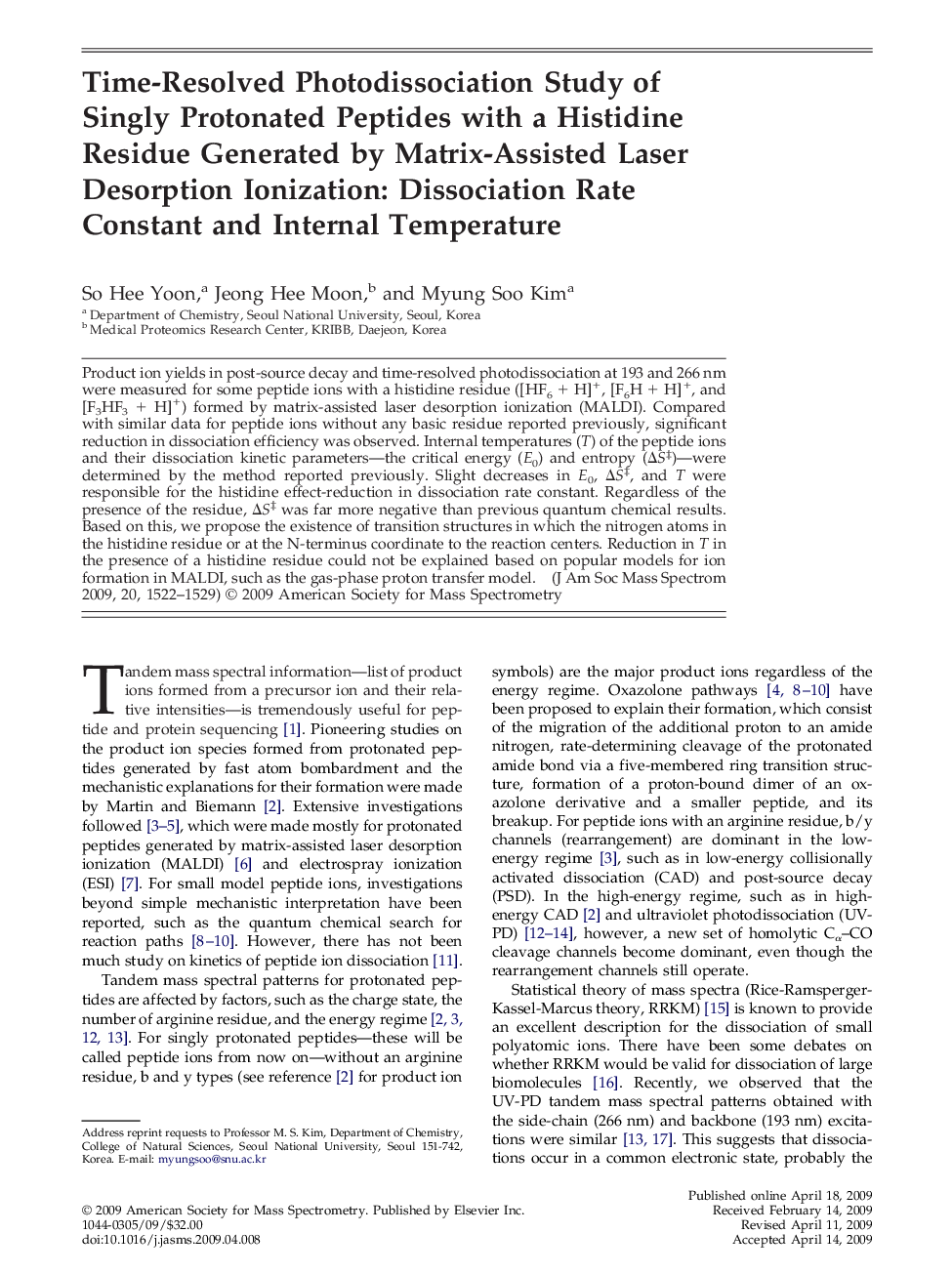| Article ID | Journal | Published Year | Pages | File Type |
|---|---|---|---|---|
| 1195227 | Journal of the American Society for Mass Spectrometry | 2009 | 8 Pages |
Product ion yields in post-source decay and time-resolved photodissociation at 193 and 266 nm were measured for some peptide ions with a histidine residue ([HF6 + H]+, [F6H + H]+, and [F3HF3 + H]+) formed by matrix-assisted laser desorption ionization (MALDI). Compared with similar data for peptide ions without any basic residue reported previously, significant reduction in dissociation efficiency was observed. Internal temperatures (T) of the peptide ions and their dissociation kinetic parameters—the critical energy (E0) and entropy (ΔS‡)—were determined by the method reported previously. Slight decreases in E0, ΔS‡, and T were responsible for the histidine effect-reduction in dissociation rate constant. Regardless of the presence of the residue, ΔS‡ was far more negative than previous quantum chemical results. Based on this, we propose the existence of transition structures in which the nitrogen atoms in the histidine residue or at the N-terminus coordinate to the reaction centers. Reduction in T in the presence of a histidine residue could not be explained based on popular models for ion formation in MALDI, such as the gas-phase proton transfer model.
Graphical AbstractDissociation kinetics of peptide ions is characterized by highly negative critical entropy, possibly due to interaction of a basic moiety with the reaction center.Figure optionsDownload full-size imageDownload high-quality image (53 K)Download as PowerPoint slide
